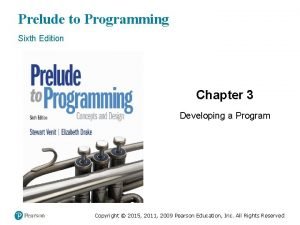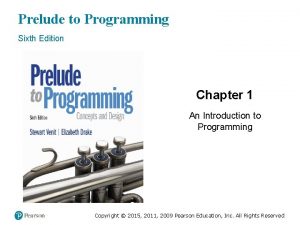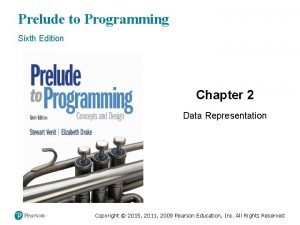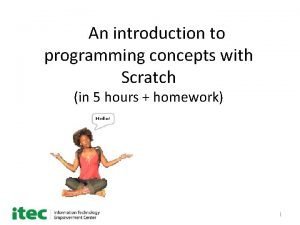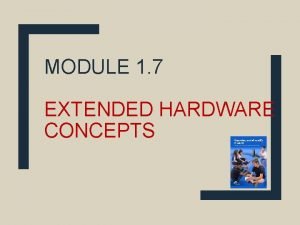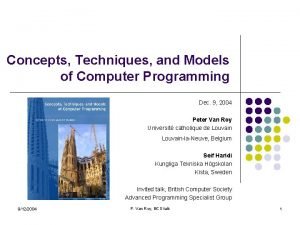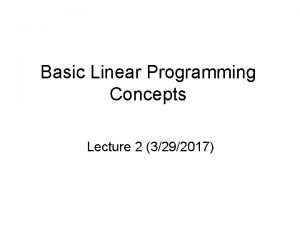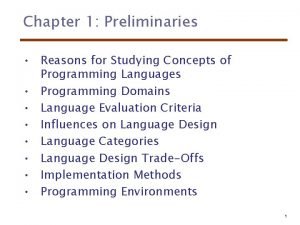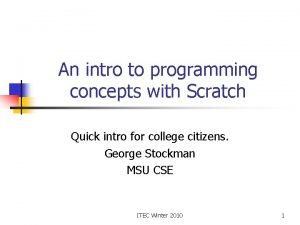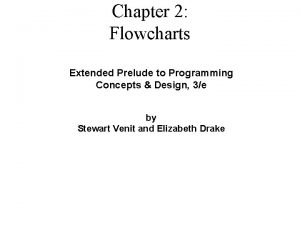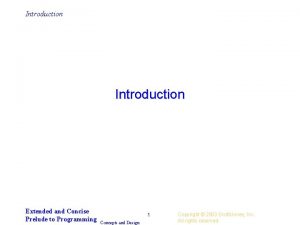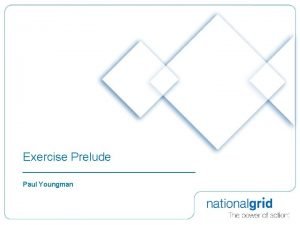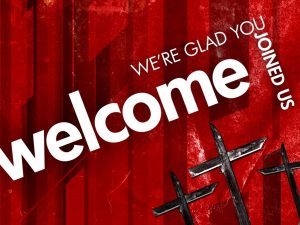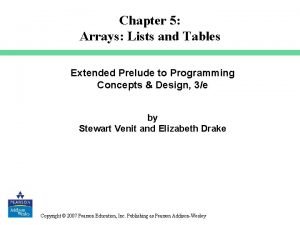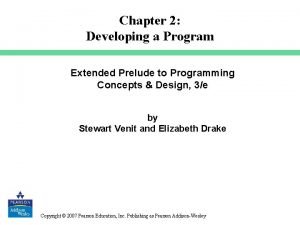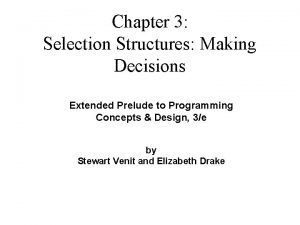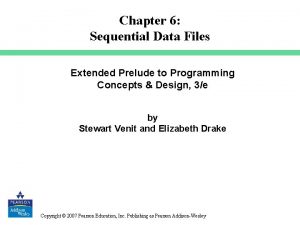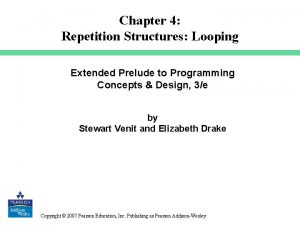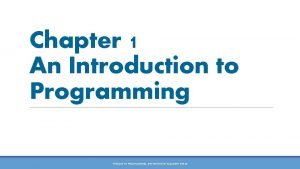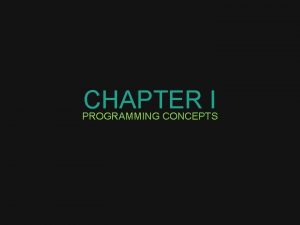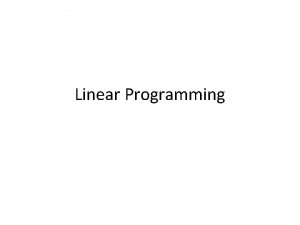Chapter 0 Introduction Extended Prelude to Programming Concepts















- Slides: 15

Chapter 0: Introduction Extended Prelude to Programming Concepts & Design, 3/e by Stewart Venit and Elizabeth Drake Copyright © 2007 Pearson Education, Inc. Publishing as Pearson Addison-Wesley

A Brief History of Computers – Calculators are used to increase speed and accuracy of numerical computations • The abacus has roots dating back over 5, 000 years • Mechanical calculators have been relatively commonplace since late 19 th century – What is a computer? • A mechanical or electronic device • Stores, retrieves, manipulates large amounts of information at high speed, with great accuracy • Does not need human intervention • Carries out instructions from a program 0 -2

The Pioneers – Mid-1800’s: Charles Babbage built the Analytical Engine • made from axels and gears that could store and process 40 digit numbers – 1940: Howard Aitken at Harvard, and Atanasoff and Berry at Iowa State created Mark I, an electronic computer. • It could not act on intermediate results. – 1945: Mauchly and Eckert at U. Pennsylvania built the ENIAC (Electronic Numerical Integrator and Calculator) • Weighed 33 tons, 17, 000 vacuum tubes • Performed up to 5000 additions per second 0 -3

Early Computers – 1945 – 1950’s: First generation computers • used vacuum tubes to do internal switching needed for computations • 1955: about 300 computers in the world built mostly by IBM and Remington Rand, based on vacuum tubes. – Late 1950 s: invention of the transistor was one of most important inventions of 20 th Century • computers based on the transistor are the first solid-state computers. – Early 1960’s: DEC created the minicomputer – about the size of a file cabinet. • Used small packages of transistors called integrated circuits – Mainframes, such as the IBM 360 are prominent in large companies and Universities. 0 -4

The Personal Computer – 1970 s: The personal computer becomes available with invention of the microchip – 1974: The microchip, along with the invention of the microprocessor led to creation of first personal computer – Bill Gates and Paul Allen founded Microsoft Corporation – Stephen Wozniak and Steven Jobs founded Apple Computer, Inc. 0 -5

Computers Today • Currently: – PCs: 95% use Microsoft Windows operating system with a huge array of available software – Minicomputers are still popular with small business and universities. – Mainframes are in use at large corporations. – Supercomputers are very powerful and specialized • Used for massive computing problems by big corporations and government departments. 0 -6

Computer Basics • Components of a computer – Central Processing Unit (CPU) – Internal memory • RAM (Random Access Memory) • ROM (Read Only Memory) – Mass storage devices • Magnetic, optical, and solid-state – Input devices such as keyboard and mouse – Output devices such as monitor and printer 0 -7

Central Processing Unit (CPU) • Often called the brain of the computer – Receives program instructions – Performs arithmetic and logical operations – Controls other computer components • Consists of millions of transistors on a single microchip that plug into the motherboard 0 -8

Internal Memory (RAM and ROM) • ROM: read-only memory – Contains instructions used by computer during startup – Cannot be altered by computer user • RAM: random-access memory – Is a “scratch pad” for user as he or she works – Can be read from and written to 0 -9

Basic Units of Memory – 1 bit (0 or 1) – smallest data holding element – 1 byte consists of 8 bits • Is the storage for one character – 210 bytes =1024 bytes = 1 kilobyte (KB) – 1024 KB = 1 megabyte (MB) – 1024 MB = 1 gigabyte (GB) – Many people approximate to steps of 1000, not 1024 0 -10

Mass Storage Devices • Magnetic storage – Hard disks, floppy disks, zip drives – Hard disks are internal, others are external • Optical storage – CDs and DVDs • Solid-state storage – Flash drives plug into a USB port 0 -11

Input and Output Devices • Input – Keyboard, mouse, digital pen, modem, wireless Internet connection, touch screen, joy sticks, and more • Output – Monitor, printer, speakers, modem, wireless Internet connection, and more 0 -12

Software and Programming Languages • Application Software – Word Processors – Database Managers – Spreadsheets – Photo Editors – Web browsers, email programs • System Software – Operating systems – Windows, DOS, Linux, UNIX 0 -13

Programming Languages – Machine Languages • 0110110111 0000000100000000 – Assembly Languages • ADD A, B – High-level Languages • Looks more like English words and algebraic expressions • Examples of high level languages ADA C++ COBOL Pascal BASIC FORTRAN Java Visual Basic 0 -14

Writing Programs • To write a program in a high-level language, you need: – Appropriate software – A text editor to type and edit program statements – A debugger to help find errors in program code – A compiler or interpreter to translate the program into machine language 0 -15
 Prelude to programming 6th edition
Prelude to programming 6th edition Prelude to programming 6th edition
Prelude to programming 6th edition Prelude to programming 6th edition
Prelude to programming 6th edition Scratch programming concepts
Scratch programming concepts Extended hardware concepts
Extended hardware concepts Introduction and mathematical concepts
Introduction and mathematical concepts Concepts, techniques and models of computer programming
Concepts, techniques and models of computer programming Linear programming basic concepts
Linear programming basic concepts Reasons for studying concepts of programming languages
Reasons for studying concepts of programming languages It takes 2 seconds to say hi
It takes 2 seconds to say hi Computer programming chapter 1
Computer programming chapter 1 History of python
History of python Chapter 1 introduction to computers and programming
Chapter 1 introduction to computers and programming Chapter 1 introduction to computers and programming
Chapter 1 introduction to computers and programming Perbedaan linear programming dan integer programming
Perbedaan linear programming dan integer programming Greedy programming vs dynamic programming
Greedy programming vs dynamic programming
